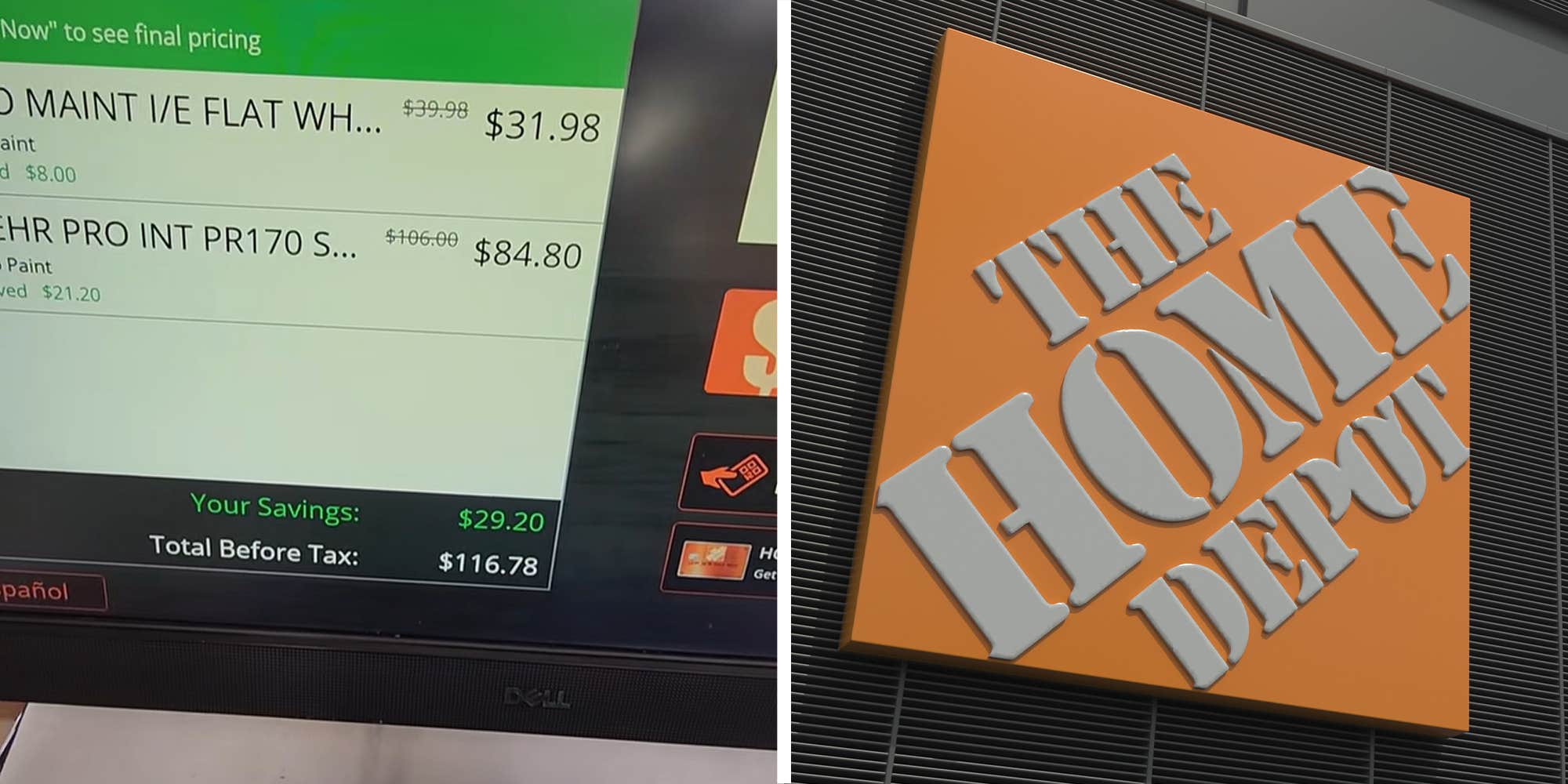Proper prep work is vital when painting interior walls in your home. A fresh coat of paint not only looks much nicer on a smooth, well-primed wall, but it will stay looking that way for much longer, too. If removing old wallpaper seems too laborious and keeps you from painting your living room, know that you might be able to skip this step and still pull off a beautiful paint application.
- Chuck Reger is the Franchise Business Coach for Dallas-based Five Star Painting, a Neighborly company.
- Jay Sanders is a licensed contractor and owner of Castle Walls Basement Waterproofing in Baltimore, Maryland.
Can You Paint Over Wallpaper?
“Although removing wallpaper is always the best route, you can paint over it in most scenarios,” says Chuck Reger, Franchise Business Coach for Dallas-based Five Star Painting, a Neighborly company.
If the removal is too costly or will damage the walls, Reger says you can leave the old wallpaper in place. However, if the wallpaper itself is damaged or has a unique texture, painting over it won’t do anything to improve the wall’s appearance, so it should be removed as carefully as possible before painting.
Consider the Type of Wallpaper
As Reger said, as long as the wallpaper is in decent condition, you’ve got a good chance of painting over it with success. However, the type of wallpaper you’re working with will impact the results. In some cases, the wallpaper itself might be easier to remove than you think. In particular, there are peel-and-stick wallpapers that are often simpler to remove than to apply; they’re often billed as renter-friendly for this very reason. If this is indeed the type of wallpaper on your wall, then grab a corner and start pulling before you begin painting.
Smooth Wallpaper
The easiest type of wallpaper to paint over is a smooth wallpaper applied with glue that still adheres well to the wall. If this is what you have in your home, you can certainly consider leaving well enough alone.
Textured Wallpaper
If you’ve got textured wallpaper, know that even sanding it down might not be enough to smooth out the texture, which will appear through any layer of paint you apply.
Peeling Wallpaper
Avoid painting over peeling wallpaper just as you would avoid painting over peeling paint. If removing the wallpaper will cause a bigger problem, then spend some time regluing it before proceeding with paint.
To avoid wasting time with the wrong approach, do a spot test. “When in doubt, test a small area first [with paint] so that you can avoid some probable headaches,” says Sanders, licensed contractor and owner of Castle Walls Basement Waterproofing in Baltimore, Maryland.
How to Paint Over Wallpaper
Painting over wallpaper requires prep work to ensure a smooth surface for the paint.
Always paint in a well-ventilated room. Wear an N95 mask when working with oil-based paints and primers to avoid inhaling the fumes. Individuals with asthma, allergies, or other respiratory concerns should avoid the painted area for 24 hours.
1. Inspect the wallpaper seams.
Don’t paint over wallpaper that’s peeling off; otherwise, that layer of paint will eventually peel off right along with it. Check the seams to ensure they are tight against the wall, and fix any that aren’t. “Paint and primer that finds their way underneath can make the edges look even worse,” Reger says.
2. Clean the surface.
Reger suggests a cloth or duster to do this. If you need to use soap or a cleaning solution, don’t use much water with it because it will only reactivate the wallpaper’s glue, making for a sticky mess.
3. Prep and tape off.
Use painter’s tape to mark the ceiling, moldings, and baseboard. Don’t use regular masking tape, or you’ll rip the paint right off the walls, warns Reger.
4. Apply an oil-based primer.
This first step is a must if you’re not planning to remove any glue left on the wall. “If you [first] use something that’s latex or water-based, you’ll reactivate the glue, which would loosen up the wallpaper,” says Reger. He recommends a tinted-gray primer for dark colors to make the paint more visible. Tip: Reger says you can latex paint over the oil-based primer but avoid anything with a high sheen, like satin, which will expose imperfections and texture in the wallpaper.
5. Paint the wall.
After allowing the primer to dry overnight, it’s time to start painting. Reger recommends using an angled brush starting at the ceiling, switching to a roller for the rest of the wall. Work in a W shape and crisscross to cover the wall. “If you brush up and down, you’ll leave new lines as paint builds up on the roller,” he explains.
Painting Tips for a Smooth, Long-Lasting Finish
Follow these tips when painting over wallpaper for optimal results.
Fix the wallpaper where necessary.
A smooth surface is best for paint, so take the time to fix any parts that might be popping up. “Make sure that your wallpaper is in fairly decent condition and does not have any bubbled sections or loose edges,” says Sanders. “If damaged, just fix it using a lightweight spackle and sand it smooth.”
Always start with an oil-based primer.
“This type of primer seals in any old glue from the paper and prevents any paint failure from occurring down the road,” says Reger. You can use latex paint over the primer or continue with oil-based paint.
Use the right brushes.
Make sure your paint brushes are designed to use with oils; Reger says they’ll have more bristles to grab the paint. “Use paint thinner or mineral spirits to clean your brushes, then air dry and don’t use them for anything but oil paints in the future,” he says.
Choose a paint that will hide imperfections.
Sanders suggests choosing colors in matte or eggshell finishes to mask any mistakes.
Pros and Cons of Painting Over Wallpaper
Removing wallpaper isn’t always the easiest task, so it’s understandable to consider skipping that step. But you’ll have to do even more prep work than you would to a painted wall to ensure that the surface is smooth and clean for the paint to properly adhere.
The right move for you depends on the current condition of your wall. It’s worth consulting a pro before you start. Otherwise, any time and money you think you could save now might turn into more time and money spent later to fix it.







:max_bytes(150000):strip_icc()/GettyImages-200376573-001-4f1bcc14a1d54363b70f94d77fc70c97.jpg)



